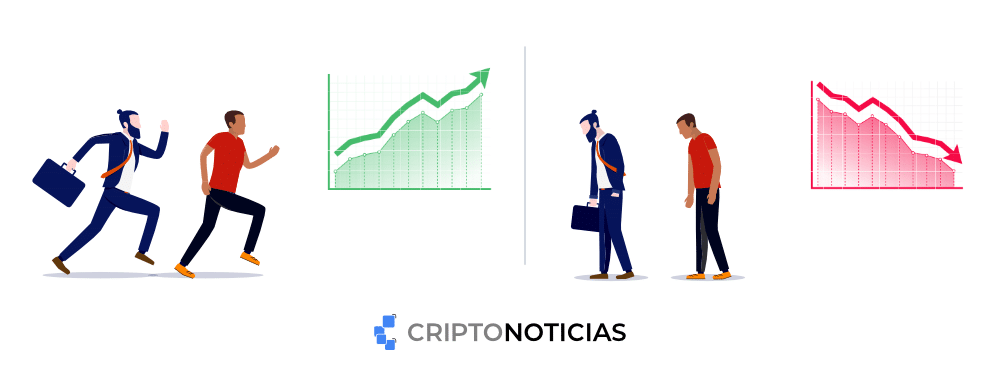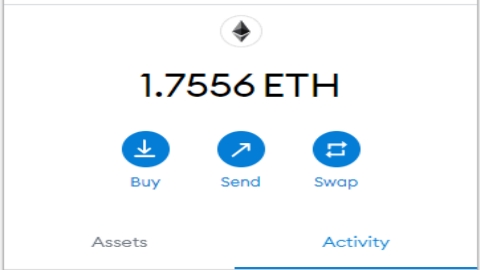If we wanted to explain in a few words what a Bitcoin mining farm is, we could say that it is a place where cryptocurrencies are generated on a large scale. In fact, that’s why it’s called a farm.
On a traditional farm, plants are grown and animals raised that produce products for human consumption. In a cryptocurrency mining farm, basically the same thing is done, only the product that is obtained cannot be eaten. Although, with a single bitcoin (BTC) it may be enough to buy everything inside a mini-supermarket.
1 What is a Bitcoin mining farm?
A Bitcoin mining farm, or any other cryptocurrency, consists of concentrate a number of mining hardware in one place and keep it operational. There is no concept that defines how many mining equipment your project officially becomes a farm. However, if that room in your house where you had your ASICs is getting too small or you already need special electrical or air conditioning installations, you may already be the owner of a small mining farm.
two How does a cryptocurrency mining farm work?
Starting a mining farm for Bitcoin or other cryptocurrencies is much more complex than turning on a bunch of computers and activating a program for them to mine. Mining at this level requires optimally conditioned facilities, specialized software for equipment monitoring and, depending on the case, even a group of people (employees or partners) who are also in charge of monitoring the hardware and doing the respective maintenance when be necessary.
On these farms you never sleep. Once mining equipment is turned on, ideally it should not be turned off again, unless it is time for maintenance. To get the most out of it, miners need to be active at all times. This implies constant monitoring of the operation of the farm in general; from the mining hardware, to everything related to electrical connections and heat dissipation.
3 Maintaining a cryptocurrency mining farm
Since we are talking about tens or hundreds of mining devices working at the same time, software is used in the farms to monitor the performance of each specific one. This makes it easy for your operators to remotely detect and correct faults.
cleaning time
From time to time, it is important to turn off the mining hardware for maintenance. It is inevitable that it will get dusty and some of its parts will wear out. Therefore, it is convenient to dedicate time periodically to this task. Depending on the size of the farm, additional staff may be required to perform this procedure.
It is convenient to maintain the hardware in parts, that is, to shut down and work with a number of computers while the others remain active. After reinstalling those that have already been reviewed, we proceed to disconnect and work on those that are pending. In this way, the farm remains operational.
4 External factors are important in maintaining a mining farm
Those who manage a Bitcoin mining farm must also know about the cryptocurrency market or at least have advisors who can give them a hand with this topic. This is because market prices can affect the profitability of mining, especially when run on a large scale.

make the most of the income obtained from mining.
Mining farms have the ability to mine various cryptocurrencies depending on the hardware they use (we’ll talk more about this later). This allows them to make changes to mine one cryptocurrency or another, according to the profitability that each one offers at a certain time.
In places with climates that can become inhospitable, mining farm administrators may be forced to shut down their equipment for a few days and even weeks. In China, when mining was allowed, there were farms that stopped their operations in the rainy season to safeguard their equipment.
In the United States, specifically in Texas and Iowa, large mining farms came to suspend their operations during the passage of winter storm Landom. This in order to avoid power failures that affect the community.
5 Types of mining farms
As for the types of mining farms, we could classify them into three lines according to the hardware they use to mine: ASIC, GPU or CPU.
ASICs are equipment designed to mine a specific algorithm. This allows them to be much more powerful and efficient than any other mining hardware.
GPUs are devices whose main purpose is graphics processing, but given their power and versatility, they are also excellent for mining cryptocurrencies.
A central processor or CPU, on the other hand, is what is considered the brain of your computer or the smartphone from which you are reading this article and, although it is less powerful than the aforementioned devices, it can also be used for mining.
Farms can mine more than one cryptocurrency, although this depends on the hardware they use. Farms that use ASIC equipment are more limited than GPU and CPU farms in this regard, as this type of hardware is made to work with a specific algorithm, as mentioned above.
ASICs have their degree of versatility
A Bitcoin mining farm could also mine Bitcoin cash (BCH) or Peercoin (PPC) as they all use the SHA-256 mining algorithm.
In the case of farms that mine with GPU or CPU, they have a greater variety of cryptocurrencies at their disposal to mine, since these equipment are much more versatile. Among the most GPU-mined cryptocurrencies are ether (ETH) from Ethereum, ravencoin (RVN), and beam (BEAM). On the part of CPU mining, the most mined cryptocurrency with this type of hardware is monero (XMR).
6 Is it profitable to have a cryptocurrency mining farm?
The profitability of cryptocurrency mining, like everything related to making a profit in this niche, is relative. The generation of income through mining depends on several important aspects.
The first, and perhaps the most obvious, aspect concerns the fluctuations of the cryptocurrency market. This market is very volatile and the cryptocurrency you mine will be on a constant up and down, so you must have a good strategy or have professional advice to get the best out of what you get through mining.
The ups and downs of the market lead us to the second variable: the number of miners on the network. If the price of a minable cryptocurrency (since not all cryptocurrencies can be mined) rises, the tendency is for the number of miners in this network to increase, since everyone wants to take advantage of the rise. If the price drops, the reaction is usually the opposite, the tide of workers in the network goes down and they go to mine another cryptocurrency that seems more profitable to them.

You may be wondering, and how does it affect me that there are more or fewer miners of the cryptocurrency that interests me? The answer lies in the consensus mechanism. Most, if not all, minable cryptocurrencies use proof-of-work (PoW) as a consensus mechanism.
This test is usually accompanied by an automatic adjustment of the difficulty that will act according to the global hashrate of the network, in order to balance the production of blocks. In other words, if the number of miners grows, it will eventually become more difficult to mine for your teams and you will receive less dividends. This works the same way in the other direction, the lower the number of miners, the lower the mining difficulty.
The price of services such as electricity and internet will also affect your income. Electricity is the one that causes a greater impact of the two. This is because the equipment used for cryptocurrency mining is characterized by consuming a lot of energy in order to process data at the highest possible speed.
Last but not least, it is essential to take into account the return on investment that must be made initially to acquire everything necessary to set up and prepare the farm. From the acquisition of hardware for mining, to the internal and external electrical installations of the site. In addition to this, we must bear in mind the cost of maintaining the equipment and the place.
7 What do I need to evaluate to have my own Bitcoin mining farm?
Profitability, hardware and software
There is a list of very important aspects that you must evaluate if you want to have a cryptocurrency mining farm. The first one is to choose the cryptocurrency you want to mine, a topic that is related to what we just talked about in the last segment, profitability. For a miner, in most cases, the best cryptocurrency is the one that generates the most profits for you.
After having chosen a cryptocurrency to mine and having studied its profitability, you now know how much you can invest in mining hardware. If you are going to mine Bitcoin, you will need ASIC equipment that is powerful and energy efficient. Bitmain’s AntMiner, MicroBT’s Whatsminer and Canaan’s AvalonMiner are among the most widely used in the niche.
If you want to mine other cryptocurrencies like ether, ravencoin or beam, then you should think about mining rigs made up of graphics cards. At the moment, there are only two manufacturers: AMD and Nvidia, although Intel recently announced the launch of its first GPU.
The competition for GPUs
As for brands and models, there are many, the problem is usually the scarcity and the overprice that they reach, since they are not only wanted by miners, but also by designers, architects, streamers and video game players.
GPU mining rigs also tend to take a bit more work to start with, as they don’t come assembled and ready to plug in like ASICs do. You must buy these by parts (mother boards, power supplies, hard drives, RAM memories, etc.) and assemble them.
With the hardware in hand, it’s time for the software. ASICs usually have their operating system already installed, but this is not the case with mining rigs. In those cases, you should install the operating system that is most reliable and convenient for you, in addition to the mining software that you will use. To this is added the program that you are going to use to remotely monitor the operation of your machines.
Pool, purse and facilities
Your mining farm could already power up by now. Now you must choose whether you will mine in a pool, a group of miners who operate together and distribute their profits among all, or alone. By mining alone, the chances of obtaining a reward are much lower, although, if you manage to solve a block, the entire reward will be yours alone.
Whether you mine with your pool farm or by yourself, you will need a wallet to receive your payments or rewards for mining. In these cases, since they are large-scale mining operations with a relatively high stream of income compared to a standard miner, It is best to have a cold or hardware wallet. This type of wallet is the one that offers the best security, since it maintains access to your cryptocurrencies offline.
The last aspect, but not the least important, is the facilities. The space where your farm will be located must be a safe and cool place, in which you have a stable electrical flow and capable of meeting the demand of your farm, which will be high. In addition to this, the place must comply with basic industrial safety standards and be well conditioned to avoid all kinds of accidents.
